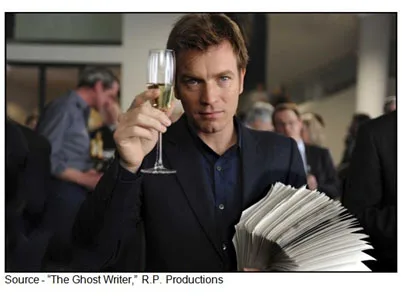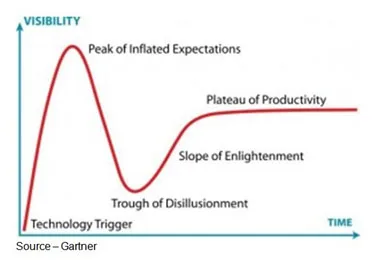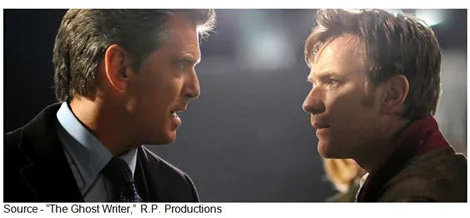The More Company Communications Changes, the More it Stays the Same

On my office wall I have two images Picasso’s Don Quixote de la Mancha and the unofficial military public information crest, “Last to Know … First to Go.”
It’s tough getting the entire corporate team moving in the same direction and doing/saying the same thing when you are:
- Constantly tilting windmills to slay dragons
- Not certain if the team is going in the same direction as part of a parade or someone is intent on running others out of town
Projecting and protecting the company’s image in today’s transparent and open business environment is a never-ending process of monitoring, measuring, interpreting and doing.
It’s a brave new world that can’t be relegated to one person, one department.
In today’s business climate, the firm’s reputation, image and focus is one of senior management’s most important duties…and their biggest challenge.

The execution can be assigned but it can’t be forgotten.
Yesterday’s fiefdoms and departmentalized walls simply ensure the information, news, messages and feedback are lost in translation.
Forewarned is forearmed.
The best CEOs, presidents and executive team members have risen to their present positions because they are competent, resourceful and seasoned by challenges and opportunities.
The very best of them, consciously or unconsciously, achieved their position because they are able to synthesize multiple ideas/plans into a single goal and market it internally and externally.
Sounds simple, but it’s a talent a few have and far too many folks “know” they possess.
The winning executives are experts in a certain area and quick learners in other.
Through good and uncomfortable experiences, they become confident to speak to small and large audiences.
They tailor their presentations and discussions not to what they want to say but rather what the audience wants/needs to hear to better understand the company, its products/services and most importantly, how it treats and serves customers.
Strong, effective communications activities should help create a united front internally so everyone is working toward a common objective across the organization, not just within individual teams/departments.
Public relations should then encourage and support the message(s) outwardly with clear, concise, effective and constant communications because it’s good for the company and good for the stakeholders.
Focused public relations activities help demonstrate the firm’s industry and technology leadership and expertise.
It puts a public face on a faceless corporation.
It also helps attract qualified employees because everyone wants to work with and associate with the leaders in the industry.
Problems arise when a renegades focus on building their own image, their own value to the firm.

They run out and interpret the message so it works for them and their personal goals. They interpret the organization’s message so it works best for them, rather than the entire organizational team.
Some refer to it as a “wall of ego.”
They often waste valuable talent by hiring based on weaknesses rather than strengths and not leveraging the talent and expertise of their team.

This leads the organization into what Gartner classically calls the “Trough of Disillusionment” among team members and dismay by senior management as to why the focus and drive has lost momentum.
When this occurs, communications can advise management on the situation but only senior management can address the situation … head on.
Communications/PR serves at the pleasure of senior management and their focus should be to help the company (and management) return the organization to a plateau of productivity as quickly and effectively as possible.
This helps ensure a balanced use of the company’s best executives, helps ensure a consistent corporate message and enables the company to maintain a solid/progressive look and feel for the company’s messages and image.
This isn’t a matter of someone’s ego and control, but rather one of optimizing every communications opportunities for the company.

The greatest challenge senior management has is getting his/her team to work … as a team.
It’s a never-ending challenge because some people are team players only when they are leading the team.
Others focus on the company’s objectives, rather than the credit … or blame.
They spend the majority of their time working with stakeholders outside the firm.
Operations such as human resources, sales, marketing, R&D, customer relations management (CRM) and purchasing are all the outward facing voices of the company.
Not just communications.
They all spend a considerable amount of time interfacing and working with prospective employees, customers, supplier partners and government agencies.
That’s why everyone needs to have access to the most current promotional presentations and materials –- releases, backgrounders and position statements.
It is vital that they all have fast and immediate access to the key executives and corporate messages, not just the “chosen few.”
That doesn’t mean making public relations available to the various departments but department managers have to be fully apprised of the goals and messages.
After all, their departmental goals are subsets of the organization’s goals and they need to know how the two work together.
That means winning the trust of the departmental heads so they seek public relations out to hone and promote their messages in conjunction with the corporate messages.
Directly supporting these people and their teams makes it easier for them to achieve the company’s goals.
If communications/public relations isn’t an integral part of all of the team’s overall strategy and activities, then it is nothing more than a cost center to them … and the entire corporation.
 Doing the right thing for the entire company isn’t that difficult, even though some managers might think you’re encroaching on their turf.
Doing the right thing for the entire company isn’t that difficult, even though some managers might think you’re encroaching on their turf.
Just remember what Robert Rycart said, “He can’t drown two ghost writers, for god sake. They’re not kittens!”
# # #